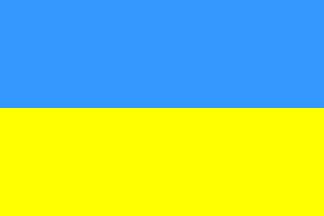
image by Ivan Sache, 09 January 2015

Last modified: 2015-01-17 by zoltán horváth
Keywords: ecuador | pichincha | quito | amaguana |
Links: FOTW homepage |
search |
disclaimer and copyright |
write us |
mirrors

image by
Ivan Sache, 09 January 2015
See also:
The parish of Amaguaña (20,000 inhabitants; 60 sq.
km) belongs to the Metropolitan District of Quito; it is located
in the valley of Chillos, 28 km south-east of Quito, at an
elevation of 2,683 a.s.l.
The origin of the name of Amaguaña is controversial. E. Moreno
Yánez (Nueva Historia del Ecuador) claims that the two main
parishes of the valley are named after their respective caciques
(chiefs), in the north, Sangolquí named after Sangoquiza, in the
south, Amaguaña, named after Amaguañuy. Other say that
Amaguaña means "love" in Aymara. Anyway, the oldest
mention of Amaguaña dates back to 1559, as listed by the
Franciscan monk Agustín Moreno in his "Cien preguntas sobre
los orígenes Franciscanos" (Hundred questions on the
Franciscan origins). In the early years of the Spanish
settlement, Amaguaña was inhabited by "doctrinas"
(native tribes not incorporating into a parish) and colonists,
including Pedro Ampudia, the son of the the founder of Quito.
Teodoro Wolf, Gonzáles Suárez and Aquiles Pérez consistently
reports the eruption of volcano Pichincha in October 1660,
considered as the biggest ever, which causes the flooding of the
valley of Chillos and the opening of the precipice of
Sincholagua. The villagers escaped to the hillsides of the
Pasochoa and Rumiñahui. Accordingly, the inhabitants of the
valleys of Tumbaco and Chillos still believe that the place was
once a big lake.
Amaguaña might have become a civil parish during the first term
of Gabriel García Moreno, 1861-1865. On 29 May 1861, the
National Convention of Ecuador issued the Law on the Territorial
Division, erecting Amaguaña as one of the 47 parishes of the
Canton of Quito, Province of Pichincha. There is, however, no
other decree stating that Amaguaña was already a civil parish,
but there are hints in local archives of the existence of a civil
administration in 1861 and 1863.
The National Park Pasochoa is located close to Amaguaña. It is
made of a sleeping volcano and hosts several endemic or
endangered. During 1996 and 1997, Doris Vela and Violeta Rafael,
from the Pontifical University of Ecuador, collected specimens of
Drosophila (fruit flies) in the western slopes of the
Pasochoa. They described three new species, on e of them being
named D. amaguana, after the parish of Amaguaña (Vela, D.,
Rafael, V. 2004. Three new andean species of Drosophila (Diptera,
Drosophilidae) of the mesophragmatica group. Iheringia. Série
Zoologia 94, 295-299 - available
online.
Maize has been grown in the valley of Chillos since the pre-Inca
period; the valley of Chillos is still known as the land of
maize.
Accordingly, the flag of Amaguaña is horizontally divided
yellow-blue, yellow representing maize and blue representing the
clear sky and the water of the rivers.
Source: Amaguaña
by Enrique V. Carrera.
Ivan Sache, 24 February 2007
The [previously reported] flag is shown upside-down.
The flag of Amaguaña is horizontally divided celestial blue-yellow.
Blue represents the sky and the honour of the women from Amaguaña.
Yellow represents the resources of the soil.
Colours were assigned in mid February 1951 to the 28 parishes of the
canton of Quito by the Municipal Institute of Education and
Culture and by the Sports Commission to prepare the Inter-parish
Olympic Games of Quito (16 September 1951).
Source:
http://amaguania.gob.ec/index.php?option=com_content&view=article&id=57&Itemid=88
- Parish website
Ivan Sache, 09 January 2015
![[Coat-of-Arms of Quito]](../images/e/ec-aman1.gif)
image by Ivan Sache, 24 February 2007